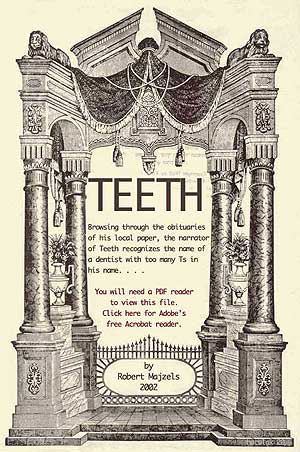As for the narrator, rather than return to the fold of family and capital gains, after the collapse of the bright-eyed movements of the 60s, he has drifted into reclusion tinged with bitterness. Alone in his tenement room and a half, except for a few remaining books, including a second-hand copy of the Talmud, he mulls over issues of community, responsibility, guilt and murder. The result is a kind of Talmudic hypertext, in which the reader wanders back and forth through screens, in a manner resembling the way we grope for unattainable certainties in our own lives. If the writing at times seems difficult, and the movement from text to text confusing, the reader might remember that life rarely offers us a straight and narrow path to understanding. There is no single or right way to read through Teeth. In fact, hypertextual composition offers us new ways to write and read that perhaps better reflect the complexity and uncertainty of contemporary life. Readers must make their own paths in this world. They may, I dare to hope, find some pleasure in the process.
Enter here....

